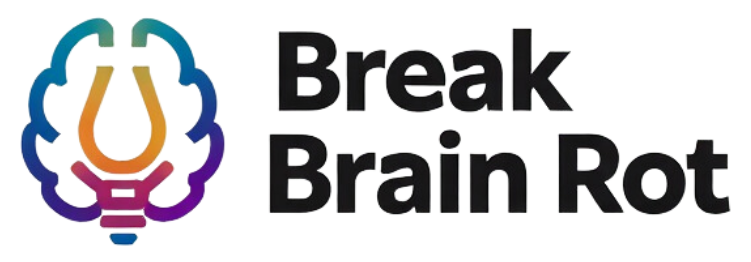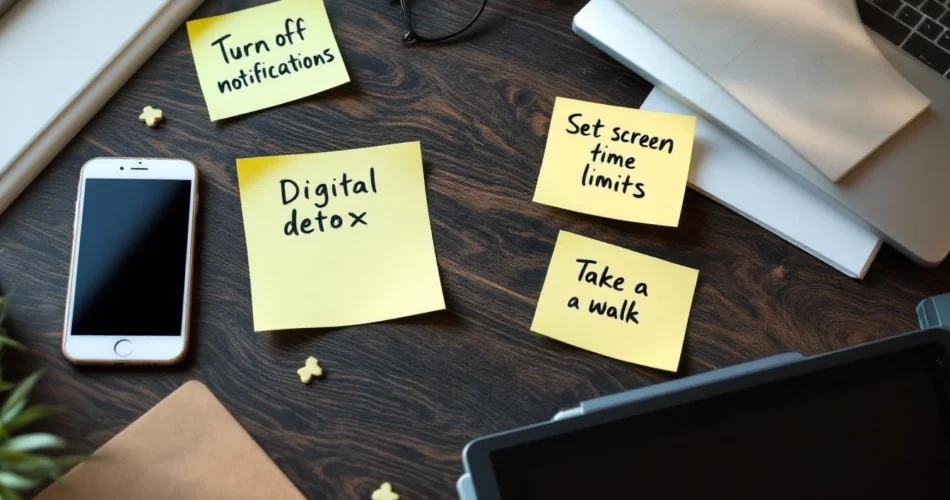Do you ever find yourself endlessly scrolling on your phone, checking notifications you don’t even care about, or feeling like you can’t fully focus because of constant screen distractions? If so, you’re not alone. In today’s always-connected world, taking a break from technology has never been more important. That’s where a digital detox comes in. This guide is designed to share practical and effective digital detox tips for beginners, helping you reduce screen time, regain your focus, and restore balance in your daily life.
Table of Contents
- What Is a Digital Detox and Why It Matters
- Preparing for a Successful Digital Detox
- Practical Digital Detox Tips for Beginners
- Managing Challenges During Your Detox
- Building Long-Term Healthy Tech Habits
- FAQs
- Conclusion
What Is a Digital Detox and Why It Matters
Understanding the concept of digital detox
A digital detox simply means setting aside time to step away from screens—whether it’s your phone, laptop, or TV. The purpose is not to give up technology completely but to pause, reset, and create space for more mindful and intentional living.
The mental and physical benefits of unplugging
Stepping back from your devices can reduce stress and anxiety, boost sleep quality, and improve productivity. Studies have shown that too much screen time is linked to higher stress levels and even physical issues such as eye strain and poor posture. According to Harvard Health, cutting down screen time can significantly improve your mental health and emotional well-being.
Signs you may need a digital detox
- You compulsively check your phone, even without reason.
- You feel anxious or restless when you’re disconnected.
- Your sleep patterns are disrupted by nighttime scrolling.
- Your productivity and focus have dipped noticeably.
If these sound familiar, it might be time to consider how a digital detox can help. For additional self-reflection, you might want to read our guide on benefits of mindfulness.

Preparing for a Successful Digital Detox
Setting realistic goals for beginners
Start small. Instead of quitting your devices cold turkey, try limiting social media for a few hours a day. Setting achievable goals ensures that you won’t feel overwhelmed.
Informing family, friends, or coworkers to set expectations
Let others know what you’re doing. This way, they’ll understand if you’re slower to respond to messages or unavailable for certain periods. Good communication prevents misunderstandings and helps you stay accountable.
Choosing the right duration for your first detox
For beginners, try a short-term detox—such as a screen-free evening or a weekend without social media. Gradually, you can extend your detox to longer periods. For further guidance, check out our article on how to set achievable wellness goals. You can also read Time Magazine’s case for digital detox for additional perspectives.
Practical Digital Detox Tips for Beginners
Turning off non-essential notifications
Constant notifications create unnecessary distractions. Go through your apps and turn off non-essential alerts—your productivity will thank you.
Creating tech-free zones at home
Establish areas in your home where devices aren’t allowed, such as your bedroom or dining table. These tech-free spaces give your brain permission to relax and focus on the present moment.
Scheduling device-free activities
Fill your day with activities that don’t require technology: reading a book, going for a walk, or picking up a creative hobby. Need inspiration? Explore our guide to healthy morning routines without screens. For deeper insights into the psychology of screen breaks, review Psychology Today’s take on digital breaks.
Managing Challenges During Your Detox
Handling FOMO (fear of missing out)
One of the biggest challenges is feeling like you’re missing out. Remind yourself that most online updates aren’t urgent, and your well-being takes priority.
Replacing screen time with mindful practices
Swap scrolling with mindfulness exercises like journaling, meditating, or practicing breathing techniques. For practical methods, see our article on stress management practices, or explore Mayo Clinic’s tips on mindfulness.
Staying motivated when temptation strikes
Keep a reminder of why you started your detox. A journal or sticky note with positive affirmations can help you stay on track when the urge to check your phone creeps in.
Building Long-Term Healthy Tech Habits
Creating a balanced relationship with technology
Instead of seeing tech as the enemy, strive for balance. Use digital tools intentionally and avoid default habits of checking your phone when bored.
Tracking screen time and making adjustments
Most smartphones and apps now have screen-time trackers. Monitor your usage and adjust accordingly. Small tweaks add up to major improvements.
Practicing regular mini detoxes
Incorporate smaller, consistent screen-free sessions into your week. For instance, set aside 30 minutes daily after work as a no-tech period. You can learn more in our resource on work-life balance tips. For official health recommendations, review the World Health Organization’s digital health guidelines.
Frequently Asked Questions
What are the easiest digital detox tips for beginners to start with?
Turning off non-essential notifications, setting daily screen limits, and introducing tech-free zones are the simplest starting points.
How long should a digital detox last for a beginner?
Start small with a few hours or one day. As you feel comfortable, extend the detox to weekends or even week-long breaks.
Can I still use my phone for work during a detox?
Yes, but set boundaries. Limit usage only to work-related tasks and avoid unnecessary browsing or social media distractions.
What activities can replace my screen time during a detox?
Reading, journaling, cooking, outdoor walking, puzzles, and hobbies like art or music are great replacements.
What if I need my device for emergencies?
That’s fine—digital detoxing doesn’t mean cutting off completely. Keep your phone accessible but restrict it to essential use only.
Conclusion
Technology is a powerful tool, but without boundaries, it can overwhelm your life. By following these digital detox tips for beginners, you’ll learn to reclaim your focus, reduce stress, and cultivate stronger connections in your daily life. Remember, a detox doesn’t mean avoiding technology forever—it’s about setting healthy limits. Start small, stay consistent, and embrace the freedom that comes with disconnecting. Ready to take the first step? Begin your own digital detox journey today and discover how refreshing balance can feel.


Really well-written article! 👏 I enjoyed the way you broke down the topic—it feels very genuine and helpful, not just theory. The practical tips make it easy for readers like me to connect and actually take something useful away.At meinestadtkleinanzeigen.de , we’re building a directory and classifieds platform in Germany where people can discover businesses, services, and opportunities across many categories. That’s why I especially value content like yours, because it shows how sharing knowledge online can really create connections.Keep up the great work—I’ll definitely be following along for more insights! 🚀